This sub-assembly line had a planned cycle time of 15 minutes. The most skilled and experienced assembler could almost get all of the work done in that time, but generally, two people were required to consistently deliver without stopping the main line.
Among other obstacles identified, the first assembly step was being done on a bench. This required the assembler to stabilize the main part with one hand, position the part being installed with another hand, and hold the tool with… you get the idea.
The idea was to design and build a jig that would hold the main part steady, in the right orientation, at a good working height.
Iteration 1: Mock up the concept.
Rodney (the lean manager) and Maegan (the line team leader) are showing their first iteration of concept.
But even before this, their real first experiment was to hold the part by hand and test where it needed to be stabilized. The cardboard mock-up was a confirmation.
Iteration 2:
They experimented with contact points and hold points and made a few adjustments…
Iteration 3: Have a more robust version made out of wood, try it with an actual part.
Learned: The part isn’t stable enough to work on.
Next experiment: Add a clamp, and mount it to a tool stand.
Then Maegan tries it out.
What did we learn?
It is difficult to get the tools behind the clamp bar.
Iteration 4:
Add some wood shims to raise the part and see if that works better.
Expected result: Should be easier to get the tool in there. Now try it.
But we learned we need a better backstop for the clamp.
Iteration 5
Which seems to have done the trick.
This, plus a couple of other changes, got the cycle time under the 15 minutes, so one person could do this job.
All of this happened over less than a couple of hours. A far cry from the traditional tooling and jig design process.
Follow-Up:
This is the final version. As you can see, there is now a wedge under the clamp to change the angle + some additional clamps that allowed the tool to also be used for another subsequent operation.
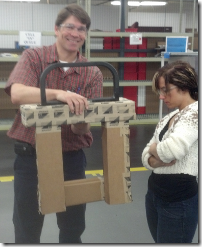
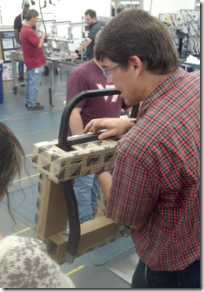
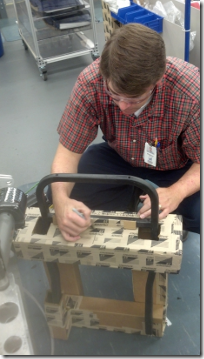
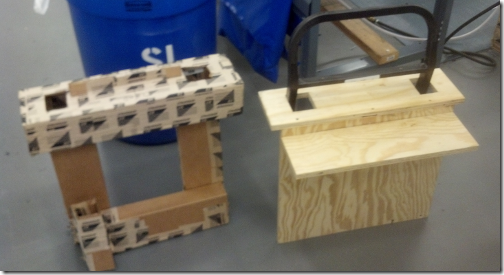
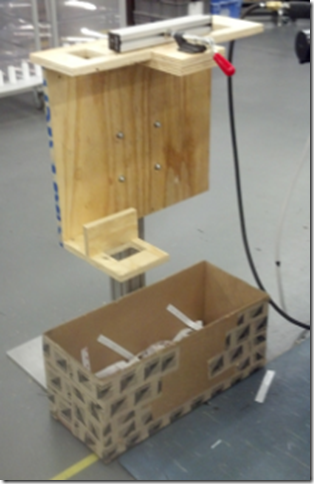
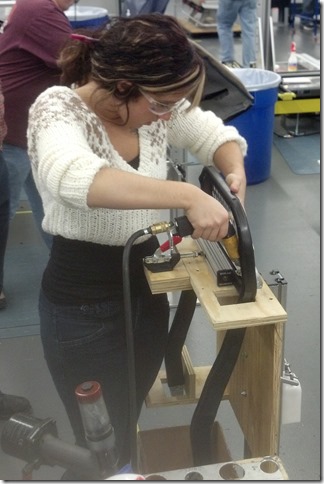
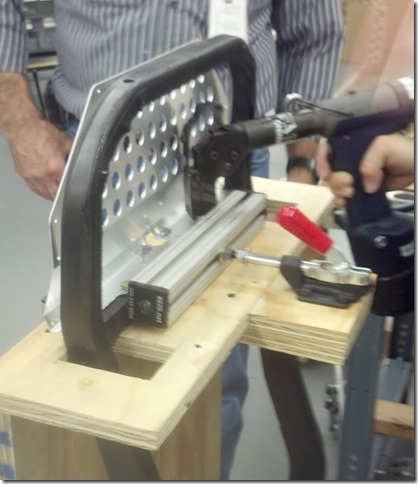


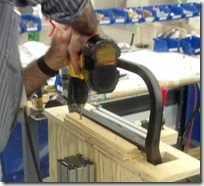
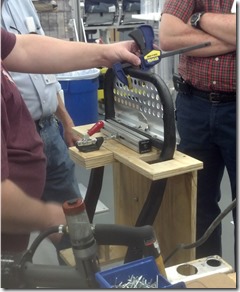


These quick PDCA cycles are great to see in action.
It seems like the Lean manager and the Team Leader were the problem solvers here. What was the role of the operator in the improvement process? Were these changes made as a part of a Kaizen event or though daily problem solving?
These changes were part of daily problem solving.
The circumstances were a little complicated in that the Lean Manager was the de-facto line manager, so was overseeing the daily operation rather than performing as an internal consultant.
The Team Leader is new. He is coaching and teaching her the process of improvement by working along side her, as well as providing the narrative of what they are doing in the improvement process itself, through the dialog of the “coaching kata.”
The assemblers are also involved, but are also working to build product throughout this process. They absolutely participate in identifying obstacles to getting the work done, providing input, and generally aren’t shy about pointing out things that aren’t helping them.
The assemblers also keep track of their cycle times for every work cycle, and fill out the run charts, and report problems as they encounter them. This is invaluable for helping everyone keep up with the current condition, where sources of variation and delay are, etc.
Edited to add: The assembler the one working with the fixture in the last photo.
What a great model for leaders to learn from. The team leader is going to walk away from that process a much better leader than she started.
One of the target conditions for the entire process was to be able to reduce the work load on this subassembly so that it could be completed by one person under the 15 minute PCT. This gave the team focus on what is stopping this from happening.
The operator in this process (see the VT tee-shirt) had been with the company less than 1 month at this point but through delivery of TWI JI came up to speed quickly. He participated heavily in improvements which took this operation from a two person job to a one person job well under the PCT.
This particular improvement was not during a Kaizen but was a deliberate attempt to eliminate a bench operation which was an obstacle to the 15 minute PCT. We had enough of watching the struggle to get the work done without a proper “third hand”.
The operator, being new, was generally of the attitude “I can do as it is” but enjoyed discussing and more importantly trying different ideas.
The result is a combination of different trials and discussions that allowed the group to bounce ideas off one another to see what works the best. No one was offended if their idea didn’t work which allowed one idea or trial to grow on the next.
Sounds like a excellent example of PDCA being done to support daily improvement. Nice work!
The best part is that it was fun!
Hello,
What was the message here with this case study ?
Was it that you dont need to go with jig-fixture design and invest large amount of time in 3D-2D work ?
Tushar-
This is just an example of rapid, iterative problem solving that evolves toward a workable solution.
The learning for me is that it is better to quickly try things, see results, adjust as necessary than to spend time designing and hoping. It also gets the users involved.
very good and clear example of daily improvement with rapid experimentation. Thanks.